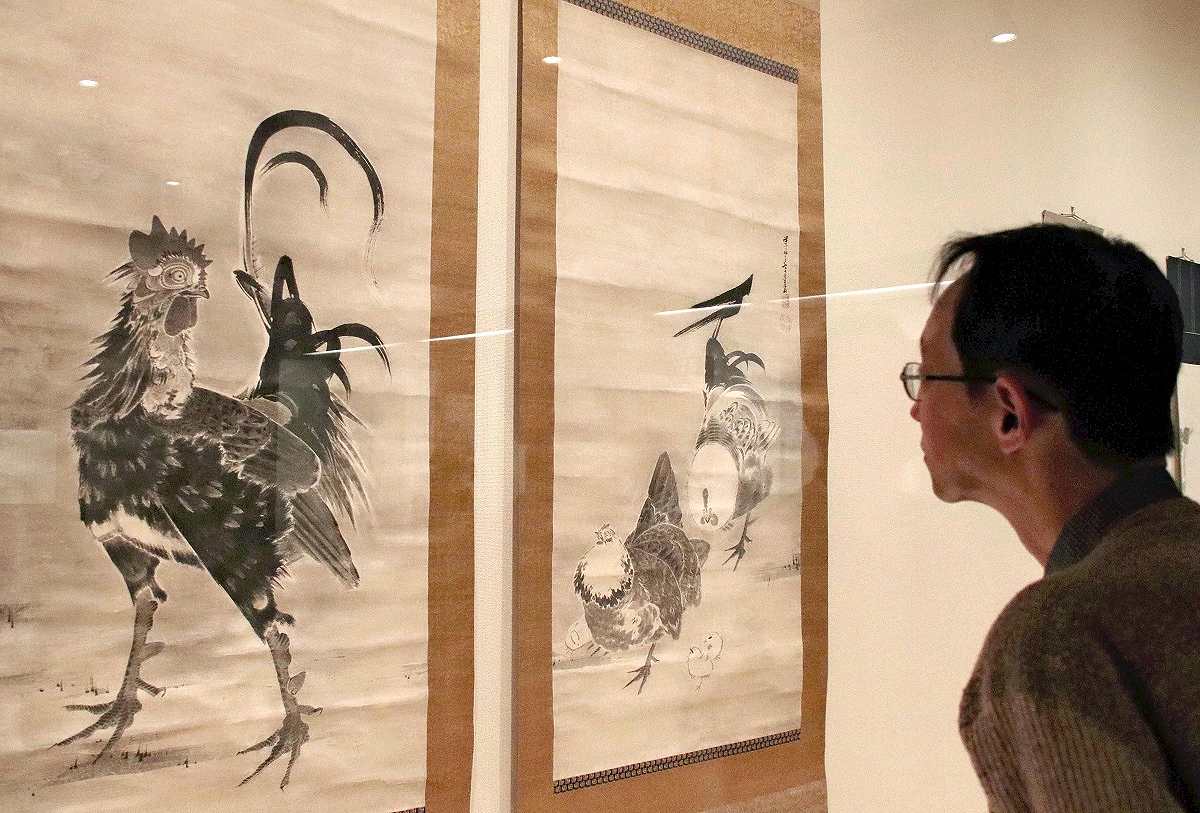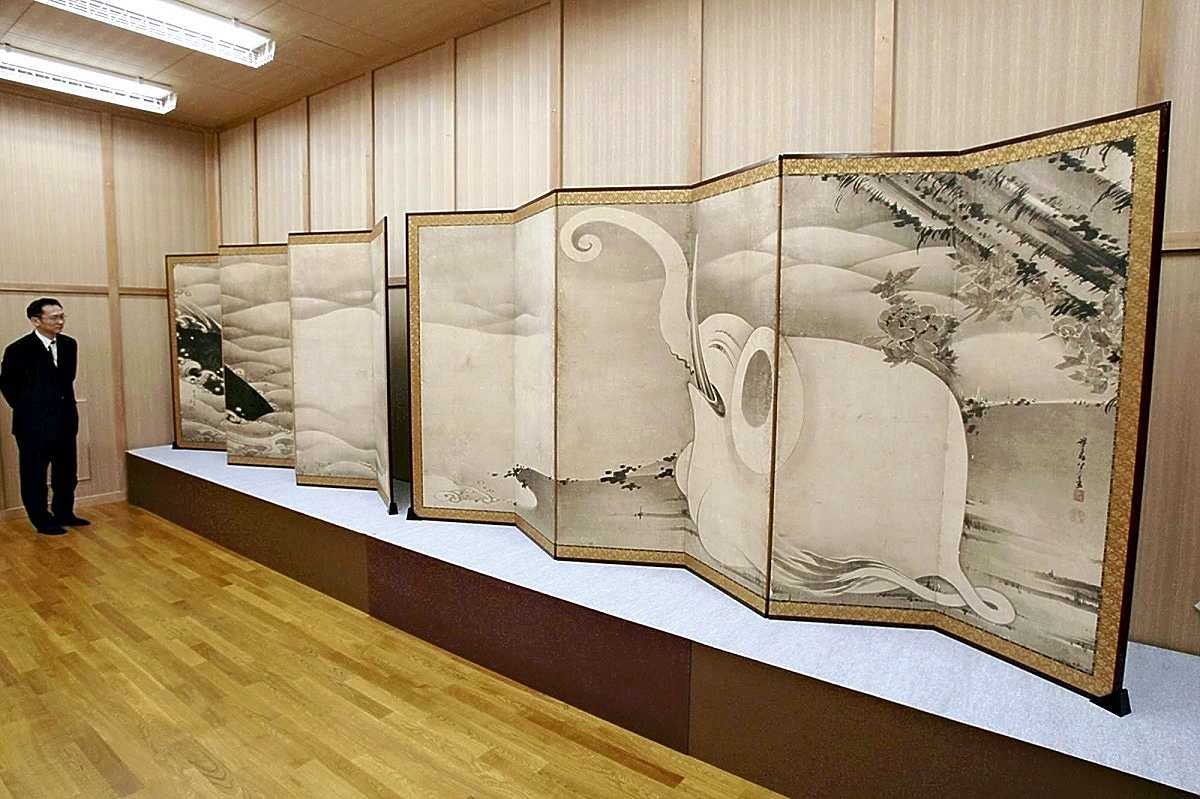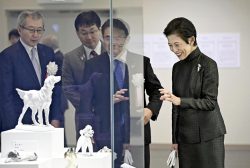
A picture from Jakuchu’s series, “Doshoku Saie” stored at the Museum of the Imperial Collections.
20:31 JST, January 15, 2021
Looking at the life of painter Ito Jakuchu (1716-1800), we see a person who was labeled an outlier in the Kyoto circle of artists.
Artists in Kyoto interacted with each other, even if they belonged to different schools, and influenced one another’s works, hence they were all regarded as belonging to the Kyoto circle. But Jakuchu was relatively isolated from the group.
I don’t know whether there were similar artistic circles in Paris and London during this period, but they definitely existed in Kyoto and Edo (present-day Tokyo), and still do today.
Jakuchu was born in central Kyoto in an area called Nishikikoji Takakura. It is located at the west end of the fish market on Nishikikoji street that was previously introduced in this series.
But Jakuchu’s family sold vegetables, not fish. He was the eldest son of the family running a large-scale wholesaler called Masuya.
He worked hard in the family business until he turned 40 according to the traditional Japanese system of age-counting. But upon reaching that milestone age, he turned the business over to his brother, who was three years younger, and went into retirement. He built a studio near his family’s store and turned his attention to becoming a painter.

The Emperor, left, who was then the crown prince, views an exhibition of Jakuchu’s works in the Petit Palais art museum in Paris on Sept. 13, 2018.
By the way, the name Jakuchu is a Buddhist title. Such titles were given to laymen who devoted themselves to Buddhism while continuing to live ordinary lives. He was given the name by a Zen Buddhist master.
The Zen master, Daiten, was a priest of the Shokoku-ji temple in Kyoto. According to writings of his that remain, Jakuchu initially studied painting in the mainstream Kano school. But he left and dedicated his efforts to reproducing Chinese paintings of flowers and birds produced during the Sung and Yuan dynasties, which were owned by temples throughout Kyoto.
Jakuchu then had a change of heart and decided it was better to paint objects he could observe directly. He started raising chickens in the garden of his house, painting their likenesses. That is why chickens are depicted in so many of his works.

A visitor looks intently at the intricacies of Jakuchu’s works on display at the Fukushima Prefectural Museum of Art in Fukushima city in March 2019.
There are also works featuring fish and vegetables particular to Kyoto, both of which he was able to sketch at the Nishiki market.
Jakuchu seemed to be the type who could not feel at ease unless his work showed the smallest details. His paintings of chickens include such minute details as pockmarks on the combs and individual feathers. His octopus paintings vividly show each and every suction cup on the arms. Such an obsessiveness gives his paintings an impression of a strange world.
While he was alive, Jakuchu was highly popular in Kyoto. But it is likely that because his style was so unique and he did not belong to any specific school of painters, he was treated as a minor artist and his work was poorly evaluated after his death.
However, all that changed after art historian Nobuo Tsuji identified Jakuchu along with several other painters of the Edo period with the key word “eccentric” in his 1970 book, “Kiso no Keifu” (Lineage of Eccentrics). From that time, there was a nationwide boom in their works, in particular Jakuchu’s, and an exhibition of his works in Tokyo a few years ago drew long lines of visitors.
Getting back to his life as an artist, as an expert in sketching, he composed a number of drawings of elephants. Was it possible that Jakuchu saw an elephant himself in the Edo period, when exchange with other countries was largely restricted?

Byobu folding screens appraised as Jakuchu’s works are exhibited at the Miho Museum in Koga, Shiga Prefecture, in December 2008.
To find out, I checked “Meijizen Dobutsu Torai Nenpyo” (Exotic animals brought in Japan: a chronology to 1868) compiled by Naohide Isono, a natural historian and professor emeritus of Keio University. I found that elephants were brought to Japan three times in the Edo period.
The first was in 1728, when Jakuchu was still a boy.
While the elephant was being transported to the shogun in Edo, it was shown to the emperor in Kyoto. It is said that a large number of local citizens also saw the elephant, and it seems that a young Jakuchu would have been in the crowd.
However, all of Jakuchu’s drawings of elephants are far from accurate, appearing with deformities.
When I asked Mr. Tsuji about this, he replied, “It may be because it was a memory from Jakuchu’s childhood. [Elephants] are huge and cute. Maybe that was the elephant in his mind.”
"Culture" POPULAR ARTICLE
-

Van Cleef & Arpels Dazzles with Art Deco Artisanry at Tokyo Exhibit
-

Disney’s ‘Twisted-Wonderland’ Animated Series Puts Villains in Spotlight: New Show Features School Inspired by Classic Disney Films
-

Japan Plans to Distribute Manga Overseas Via New Platform
-

Ayumi Hamasaki’s Shanghai Concert Canceled Day Before Schedule as Part of Beijing Backlash
-

‘The World Masterpiece Theater Series’ Celebrates 50 Years; Animator Looks Back on Creating Anime Classics
JN ACCESS RANKING
-

Keidanren Chairman Yoshinobu Tsutsui Visits Kashiwazaki-Kariwa Nuclear Power Plant; Inspects New Emergency Safety System
-

Imports of Rare Earths from China Facing Delays, May Be Caused by Deterioration of Japan-China Relations
-

University of Tokyo Professor Discusses Japanese Economic Security in Interview Ahead of Forum
-

Tokyo Economic Security Forum to Hold Inaugural Meeting Amid Tense Global Environment
-

Japan Pulls out of Vietnam Nuclear Project, Complicating Hanoi’s Power Plans

























